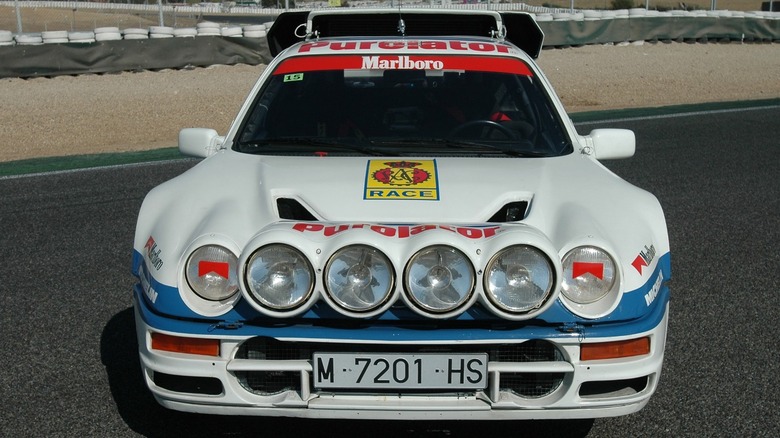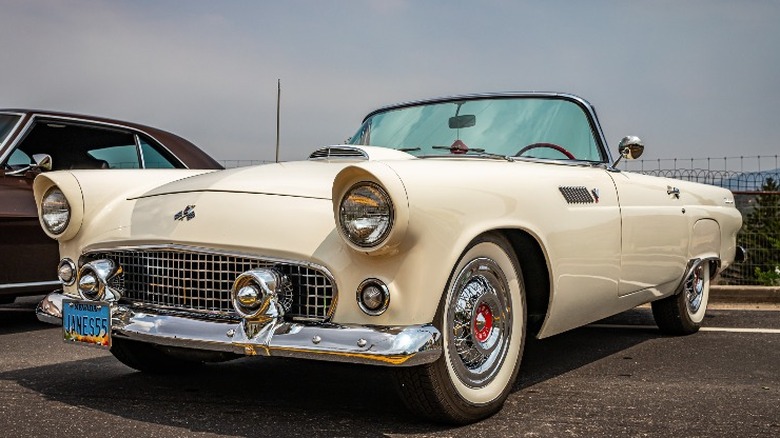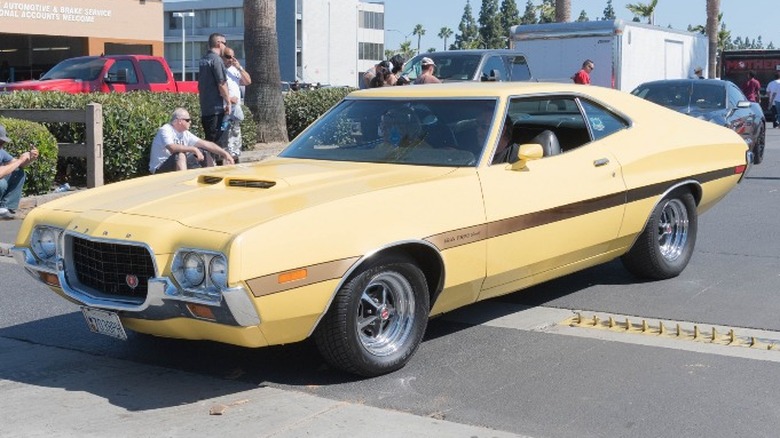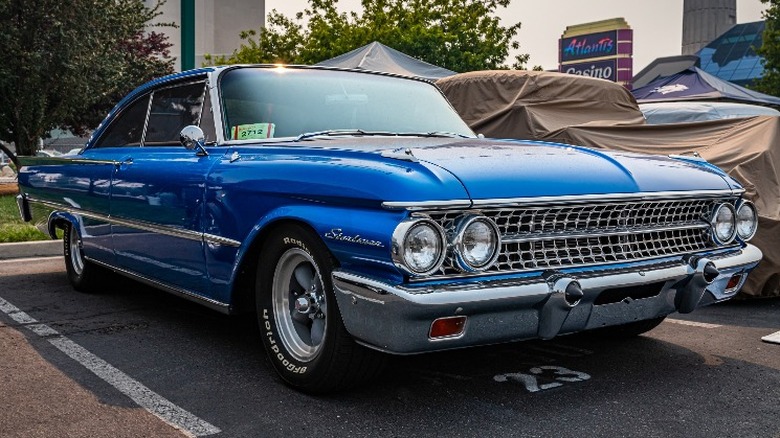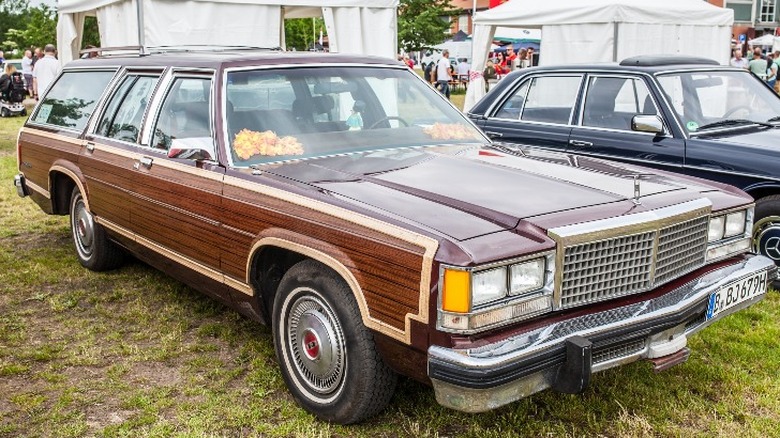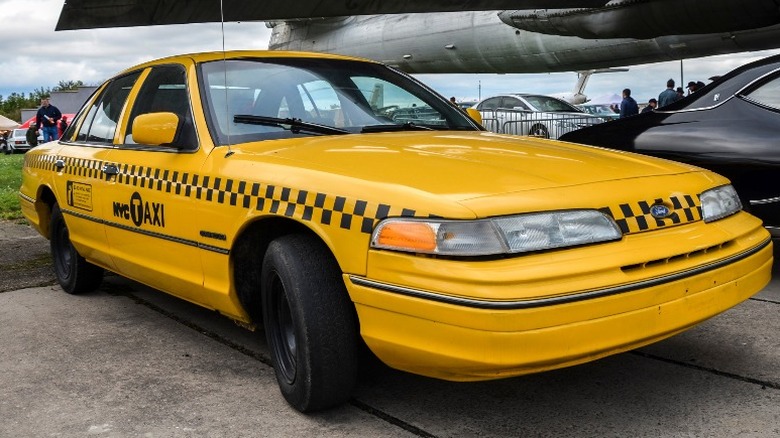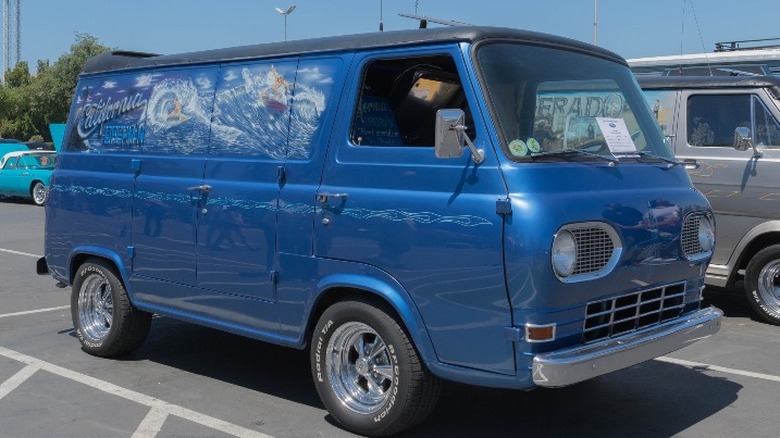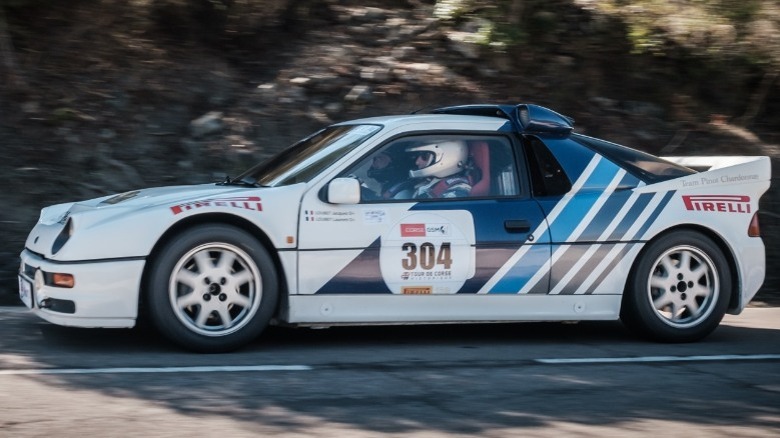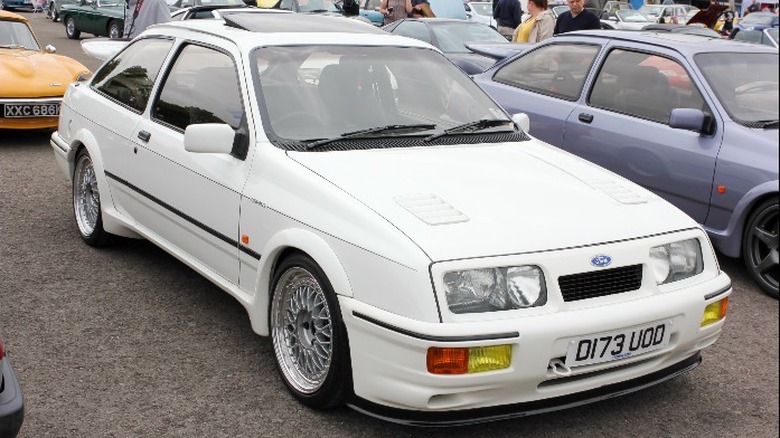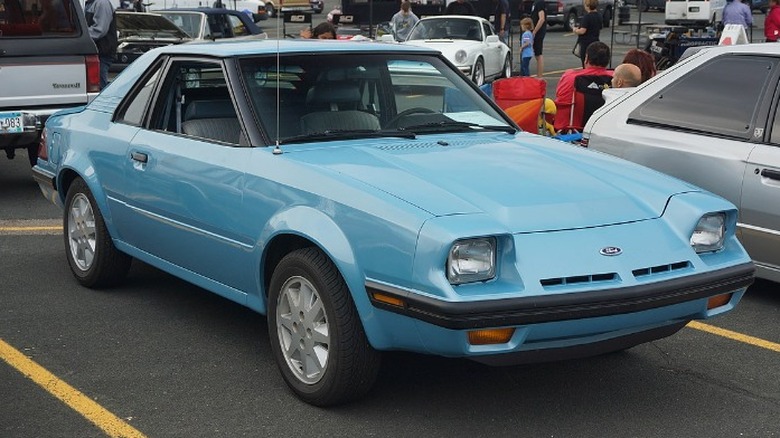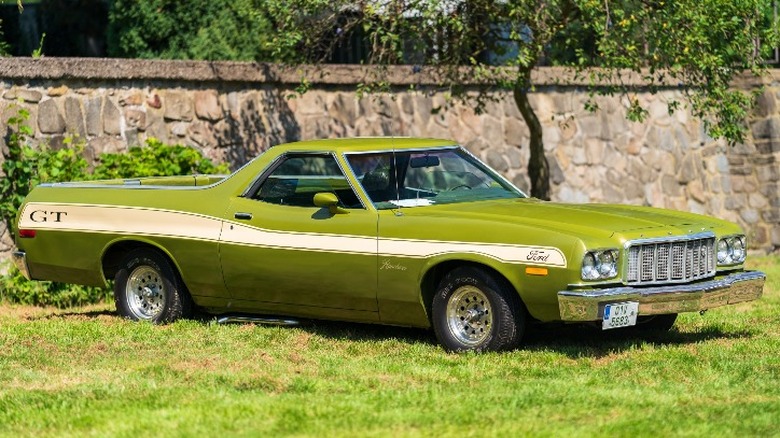10 Classic Fords We Want To Make A Modern Comeback
Ford Motor Company has created and manufactured some amazing cars over more than a century of building them, although the current lineup hardly includes any cars at all. As the crossover and SUV take over American highways – the rest of the world still drives cars for some reason – some of us lament the downfall of our beloved sedan and wagon. For those of a certain age, piling into the family car represents a more honest time, before such frivolous additions as airbags, crumple zones, and antilock brakes ruined modern motoring. Although we should tread lightly bringing up those memories – nostalgia is a curious thing.
Throughout its history, Ford has brought us some truly remarkable cars and also the Edsel and Pinto. We still have the Mustang and the Taurus has only recently departed (via AutoInfluence). But today, we are left with an uninspiring bunch of dull crossovers beginning with the letter E. What if current management was fired and instead of choosing from an Escape, Edge, Ecosport, Explorer, or Expedition, we could pick from one of the many historical models to cruise in? Realistically, there is no rational reason to resurrect the Model T, but what if we could have modern interpretations of some of Ford's hits from the past century? Government regulations and market trends would never allow it to actually happen, but, as a thought experiment, it might be fun to try. Therefore, purely for reasons of meaningless entertainment, here are 10 classic Fords we want to make a comeback.
Ford Thunderbird
Ford filled a gap in the American car market bringing the Thunderbird to market, responding to the popularity of the downsized sports cars brought back by GIs after WWI, a phenomenon covered by The Washington Post. It later defined the "personal luxury car" segment for a generation until its end came in the late '90s. However, Ford did resurrect it in 2002, but botched it with ugly retro styling and pricing it way too high.
A new Thunderbird taking us back to its roots with two seats, a convertible top, and styling along the lines of the new Mustang would be quite nice. American roadsters are hard to come by these days, and something to rival the Mazda MX-5 which is a bit larger and more powerful would be a compelling machine. If it used the same sporty design as the Mustang but with an upscale interior and a turbo EcoBoost engine, the Thunderbird might just fly in the modern age, and perhaps it will as Ford has already hinted at the possibility.
Ford Gran Torino
The intermediate coupe is something we no longer see in showrooms, although it was once a popular segment. Every carmaker had a model in its lineup that was slightly smaller than its full-size car, but much roomier than the compact, and came only in a two-door option. Except for a few models from Aston Martin or Ferrari, we just don't see that today. Perhaps the pressures of modern life and the utility needed from our vehicles have squeezed this segment out of the market.
While the Gran Torino is something we perceive as cool and unique with our modern lenses, they were just a typical car way back when. According to Hemmings, it was the best-selling midsize car for 1972, the first Torino to add Gran to its title. However, new regulations meant the heyday of horsepower had officially ended. Should this nameplate return, it would fit in Ford's lineup more along the lines of the current Edge. Therefore, a new Edge set lower with more appropriate car-like proportions and a trunk instead of a hatch is probably what the Gran Torino would be. It might not be a fire-breathing muscle car, but it would be a comfortable and roomy car for sensible drivers, but likely drivers with no kids.
Ford Galaxie
The second-generation Ford Galaxie is a slick-looking car. It has a bullet-shaped nose with straight lines running all the way to the back, much like a rocket, terminating into two circular taillights like the rocket's exhaust ports. The space theme of this car is undeniable, and it was not an accident, as the space age influenced car design for many years. The technology of the time was prominent in the late '50s, and the people back then were astonished at the progress and the advancements in science taking place, which is why Ford could capitalize on these ideas in its design.
In 1961, according to Hemmings, the Galaxie Starliner was available with a lengthy list of performance upgrades, including a tri-power triple carburetor setup, heavy-duty springs, and heavy-duty brakes. It was part of what could be called the genesis of the muscle car, even before the GTO arrived on the scene.
It is hard to say if it would actually sell, but a Ford grand tourer with a high-power electric drivetrain called the Galaxie Starliner would certainly set the automotive press on fire. An electric evolution of the SHO Taurus and Thunderbird Super Coupe of the '90s in an EV, complete with high-tech and space-themed details would be a sight to behold. However, as long as buying decisions are influenced by people who actually buy cars rather than those of us who know what should sell, this is not likely to happen.
LTD Country Squire
The Ford LTD Country Squire wagon of the mid-'70s was a large vehicle. Hagerty lists engine choices of 400 or 460 cubic inch V8s, meaning it was capable of hauling a good amount of weight, be it dorm room furniture or half the soccer team. Seating was spacious and styling decidedly archaic, with faux wood panels throughout the interior and down every body panel on each side. But the Country Squire was good for everything and provided a smooth and comfortable ride with more than enough legroom for the whole family, and that is what mattered.
Ford could easily bring back the old family wagon, call it a WUV (wagon utility vehicle), and put it on sale. With modern real wood touches inside and an updated mahogany accent on the exterior, Ford would have a winning combination. The only thing needed to sell it would be the right marketing campaign, convincing buyers that wagons are cool again. As recently as 2020, Tyler Hoover and Autotrader made arguments for bringing back the glorious fake wood-paneled car.
The original Country Squire, according to Hagerty, was a very mundane transportation unit, although it had some cool features, such as hidden headlights and automatic climate control. It survived through the '80s and it shrank a bit, but the faux wood remained. Ultimately, the old-timey looks and naming of the traditional wagon gave way to European flair and yards of plastic. Now it is up to Ford's designers and engineers to do the right thing and build a station wagon nobody will buy.
Ford Crown Victoria
The formidable Panther platform is a rear-drive front-engine body-on-frame base underpinning Ford's large cars through to the '90s and '00s. The Crown Victoria, Police Interceptor, Mercury Grand Marquis, and Lincoln Town Car were all based on this platform. However, there are no large and affordable cars anymore. Furthermore, the Crown Victoria line served institutional duty for decades as police cars and taxis, proving the durability of the rugged construction.
The Ford Explorer has taken over police duty while taxis have largely made way for Uber cars, negating the need for fleet vehicles. So maybe there is no market for a large family sedan. However, luxury marques still offer sedans such as the BMW 8 Series, Volvo S60, and Mercedes-Benz S-Class. Why can't we in the middle class have something similar? Hagerty reports that sales of the Crown Vic declined steadily before production ended in 2011, with the lion's share going to institutional customers. Consumers largely opted for the more upscale Mercury or went all-out for the Town Car. Perhaps it was past its prime, but it was also fairly outdated by then.
If Ford revealed a new full-size sedan with a hybrid or all-electric powertrain, allowing for ample trunk space and legroom, it would be a hit. At least the automotive press would praise it and Crown Vic fans would rejoice. Sure the cars would sit on the lot while Explorers went out the door, but nothing about this exercise is meant to be practical.
Ford Econoline Van/Truck
The Econoline name has been used by Ford on its vans for decades. For many years, these vans were nothing unique, serving as a box on wheels much like those from any other company. But the first generation of Econoline was something special, forward control (FC). FC vehicles are simply those with the steering placed ahead of the front wheels, usually with the engine positioned between the driver and passenger (via Hagerty). This gives the Econoline van a unique look and a peculiar driving experience. Today, Econolines are a favorite among auto restorers, with excellent examples showcased by Hoonigan and History on YouTube.
Ford's Econoline represented a response to the popular VW bus coming in from West Germany and was based on the compact Falcon platform, per Live About. This made it a smaller and more manageable van that behaved more like a car and appealed to city drivers. It also came as a truck for light hauling where a heavy truck was not necessary. It originally came with an inline 6-cylinder and could accommodate a V8 and it sold relatively well until being replaced with a more conventional setup in 1968.
With the return of the VW Bus as an EV in ID.Buzz form, it is time for Ford to respond again. A midsize people carrier or city hauler with an all-electric drivetrain could be an ultimately versatile vehicle with endless possibilities for useful configurations. With autonomous driving, it could even once become small-scale mass transit, with the proper infrastructure. Until then, we will have to make do with the Transit Connect.
Ford RS200
North American readers may not be familiar with the RS200, as it was a product from Ford of Europe and never officially exported from the continent. Created as a homologation vehicle to race the Group B rally series, it never saw the track as Group B was canceled after a series of horrific accidents. The demise of Group B most likely stemmed from the complete lack of regulations on power, per Hi Consumption.
For those unfamiliar with the RS200, it was a tiny rocket with two doors and an engine in the middle of it. The styling and platform are similar to the Toyota MR2, only built to race. Ford made the RS200 in 1986 and outfitted it with a Cosworth-engineered 2.1-liter 4-cylinder that was turbocharged, mounted longitudinally, and good for 600 horsepower. With a curb weight of just 2,600 pounds, this was a car that you did not drive, it drove you. Sadly, according to The Drive, Group B racing ended and only 24 examples were made.
Few people would argue with bringing back a super compact two-seater ford with a new 300+ horsepower EcoBoost in modern skin. Taking cues from the recent Fiesta or Focus and transporting them to a new RS would look slick, and the ability to add a track-focused screen in the instrument cluster would make an extremely fun little track bandit. Sadly, the overwhelming cost of creating a platform for a single model would make the bean counters frown, even if the rest of us would be grinning from ear to ear.
Ford Sierra
Another Euro Ford that would be a welcome revival is the Sierra, imported to the U.S. as the Merkur XR4Ti. In the U.K., family cars had decidedly less chrome and less girth than their American counterparts. This meant a popular family car coming out could be something like the Sierra, which is a slick four-door hatchback. This car dropped the grill as well as the chrome, filled the interior with high-quality materials, and shaped the body with slightly aggressive lines and subtle curves.
According to Hagerty, sales started weakly, but a large marketing push and the introduction of a 148-horsepower V6, a respectable figure for the time, helped move sheet metal off the lot. Cosworth would come in later and deliver a super quick RS model and bolster its image further. Sadly, Americans got a great little car with a botched execution, using a weird new brand name on an even weirder model name.
Today, the RS models are highly collectible and the Cosworth versions can be tuned for impressive output. A new Sierra built on a world platform would be so much better as a small car option than the boring Ecosport, a crossover that exudes blandness and lack of purpose. If Ford used the Ecosport design to shape a rear-wheel-drive car with a small turbo 4-cylinder and added the signature double spoiler of the original Sierra, we would be singing its praises.
Ford EXP
When discussing favorite cars of the '80s, the Ford EXP is not likely to come up, if at all. Ford made this little two-seater sporty car for nearly the entire decade, but it never gained the traction of its contemporaries, such as the Mustang, MR2, or Fiero. Intended to be a companion model to the new Escort, the EXP never caught on and sales remained lackluster throughout its production (via Curbside Classic). Reasons it never sold well could be attributed to its lack of rear seats and initial offering of just 70 horsepower, but most would agree it is just plain ugly.
If it never sold well, is not collectible today, and is admittedly homely, why would anyone want it back? The answer is for Ford to have a competitor to the Toyobaru BRZ/GT86. Toyota and Subaru both have done well with this car, as a fun and simple car that steers clear of the higher tax brackets and can be easily modified by home mechanics. Therefore, Ford needs a fun alternative, and the ugly factor could be easily rectified by ensuring the designers have working eyes before sending the drawings to the printers.
[Featured image by Greg Gjerdingen via Wikimedia Commons | Cropped and scaled | CC BY 2.0]
Ford Ranchero
It is common knowledge that everyone loves a ute — probably. For the North American market, Ford started with its Custom sedan, morphing it into a pickup by removing the rear seats and turning the trunk into a bed. Chevrolet followed with its El Camino two years later.
The Ranchero proved to be a popular formula, and Ford continued selling it through seven generations, ending in 1979 (per Hagerty). Each model was based on one of Ford's regular car models and its appearance looked identical to each, including the original Custom, Falcon, Torino, and LTD.
Car enthusiasts have clamored for a new ute for decades since Ranchero and El Camino ceased production. The existence of the Australian Holden Maloo and Ford Falcon Ute has felt like a thumb in the eye for a generation. And while Ford has now bestowed the mighty Maverick upon us, it is not a ute, which means it can't be fit to shred at the track and then pick up some hay for the animals on the back 40. A proper Taurus-based ute should be in the works to quench the thirst of the thousands of enthusiasts who would like to see one and the dozens of customers willing to actually buy one. We can dream.
